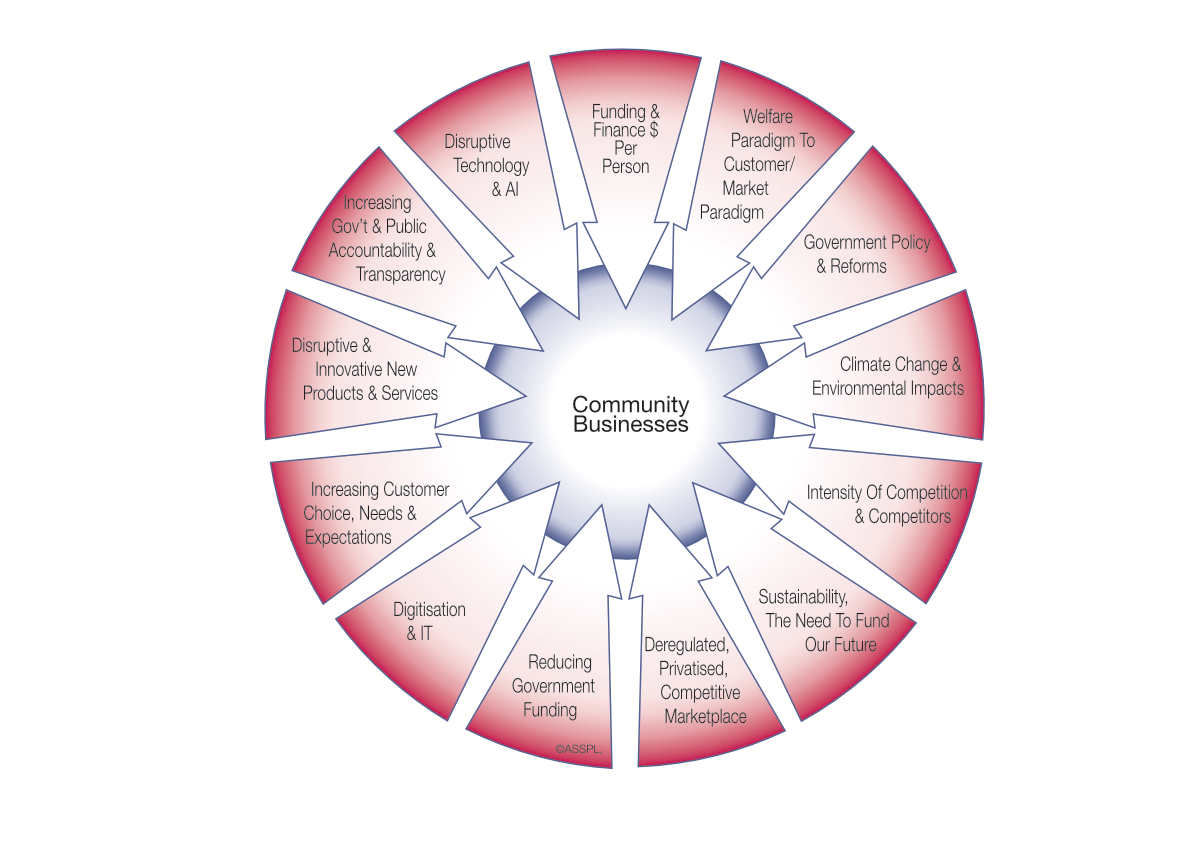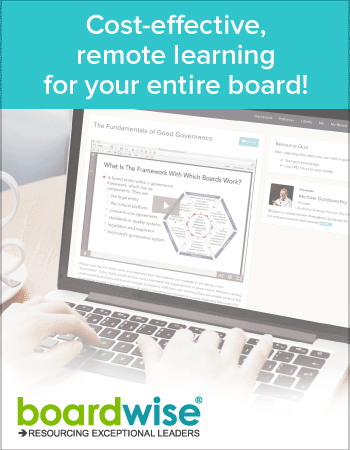leadership
Transformation Starts at the Top
Published: May 8, 2025
Read Time: 6 minutes

The transformation of an organisation and therein transformation of its business, service or financial model, and all the elements which make an organisation function, is part of the board’s strategic leadership responsibility. For a board to effectively transform an organisation it should first consider the need to transform its own governance and leadership.
A board’s strategic leadership responsibility forms part of the board’s two governance roles and four governance responsibilities. These are:
two governance roles,
- acting in the best interests of the organisation; and
- acting in the best interests of stakeholders, and
four governance responsibilities,
- strategic leadership;
- policy based decision making;
- monitoring and reviewing; and
- compliance and coverage.
What does it mean to have a strategic leadership responsibility?
If transformation is part of the board’s strategic leadership responsibility, directors need to first understand what this responsibility encompasses. Let’s break it down,
-
Strategic is… relating to identification of major or overall aims/goals, and the means for achieving these.
-
Leadership in an organisational context is…
- engaging, influencing and empowering others,
- to commit, contribute and/or succeed in their role; and
- therefore, contribute to the success of organisational goals.
Bringing it back together, strategic leadership is leadership that pertains to the major or overall goals of the organisation and how these goals are achieved via the enactment of strategies. Mindful that while boards set strategy, approve policy frameworks and require data and information to make decisions, amongst many other activities, they are reliant on many other people to get things done.
Other key aspects of a board’s strategic leadership responsibility include being the keepers of, and driving, the vision, mission and values, determining a desired future and setting strategies to achieve this future.
If directors are fulfilling their strategic leadership responsibility effectively the organisation should be in mission mode – growing and/or developing – most of the time, and only for a limited time be in maintenance mode – where things are much the same – but never allowing the organisation to fall into muddling mode.
How do directors fulfil their strategic leadership responsibility?
One of the key elements directors should be using to fulfil their strategic leadership responsibility is the strategy process. This should be designed and implemented such that the board, chief executive officer (CEO) and executives/senior team work together on the strategic ideas, opportunities, challenges and risks facing the organisation. Participants should be engaged to strategically think, strategically discuss and ultimately make strategic decisions, leading to the development of the strategic plan. Of course, we should not forget the implementation, monitoring and reviewing phases of any robust strategy process.
The case for transformation
If transformation of an organisation is grounded in the board’s strategic leadership responsibility, how do we distinguish between strategy as usual and when there is a need to transform an organisation?
For many organisations the need to transform is connected to their industry or sector’s drivers, forces and trends, for example:
- government reform that has, or is, moving service delivery to a customer-driven competitive market paradigm; or
- intense industry or sector competition where leading organisations or preferred providers secure market share.
Paradigm shifts and such industry and sector dynamics are a radical departure for many boards and their organisations; whose service, business and financial models, and all the elements which make the organisation function, were perfectly adapted to the past paradigm. Remember Joel Barker’s maxim, when the paradigm shifts the rules return to naught.
Parallel to these industry and sector dynamics there are typically a range of mega trends, societal factors or similar driving paradigm shifts and the need to transform organisations. From disruptive digital technologies and new start-ups to increasing customer needs and expectations, climate change and more, there are a range of external drivers, forces and trends that surround and shape organisations – whether or not leaders see and understand such forces and the emerging future.

Starting at the top, transforming your board
If the board is responsible for transformation as part of its strategic leadership responsibility, the individuals who make up the board need to have the right mindset, skills, knowledge and experience to drive organisational transformation. If your board has individuals who are walking backwards into the future looking at the organisation’s glorious past, there will be no future.
Transforming a board starts with creating awareness and building understanding amongst directors of their individual and the group’s collective strategic leadership responsibility. For organisations delivering government funded human services, directors must also understand the impacts and implications of the move to a customer driven competitive market paradigm, and generally for any organisation directors must understand the big picture drivers, forces and trends shaping their industry or sector.
Directors also need to reframe how they think about their organisation – moving from the concept of being a not-for-profit (NFP), charitable or volunteer organisation to a community business or social enterprise. NFP legal structures are labelled as such as they prevent the distribution of income to members (the owners) for personal gain. The income and assets of the legal entity must be used to advance the purpose of the organisation, typically represented by its objects in its Constitution.
While this is well understood amongst NFP, charitable and some commercial lawyers, over time the term NFP took on a different meaning amongst the general population and directors, employees and volunteers of NFP legal entities. NFP was taken to mean the legal entity could not make a profit. Philosophically for many decades to talk of NFP legal entities making a profit (or even using the word surplus) was akin to blasphemy for some. This was also reinforced by the nature of government grants which typically required the full value of the grant to be spent on the program or project that was funded.
Reframing directors thinking to their organisation as a community business or social enterprise is also about recognising the organisation is autonomous from government, self-directing and self-managing. Directors do not need to wait for government to tell them what to do; not forgetting however if you take the government gold (funding), you take the government rules! Government funded programs are just one way of achieving vision and mission.
Ultimately directors of a community business must balance their heads and hearts. That is, balance all the social/service objectives and outcomes with the business objectives and outcomes to enable the organisation to achieve vision and mission.
Starting the conversation
Creating awareness, building understanding of the aforementioned and subsequent key activities, steps or processes to transform a board require honest and objective conversations about where a board, organisation and its services are really at and how they are performing.
So, with your new or strengthened understanding of where transformation sits in director’s governance roles and responsibilities and clarity about the key drivers of transformation, what are you waiting for? Start the conversation around your board table.
This article was first published in the 2024 Better Boards Conference Magazine.
Further Resources
Adaptive Governance… Transformational Leadership
Organisational Transformation Panel, Successfully navigate disruption and discontinuous change
Digital Transformation & Governance, 5 Key Questions for NFP Boards
Share this Article
Recommended Reading
Recommended Viewing
Author
-
Senior Consultant
Australian Strategic Services Pty Ltd
- About
-
A Senior Consultant with Australian Strategic Services, Aaron assists boards and individual directors to not only understand what their duties at law are but understand key concepts underlying organisations and how these enable fundamental governance principles and practices.
Found this article useful or informative?
Join 5,000+ not-for-profit & for-purpose directors receiving the latest insights on governance and leadership.
Receive a free e-book on improving your board decisions when you subscribe.
Unsubscribe anytime. We care about your privacy - read our Privacy Policy .









